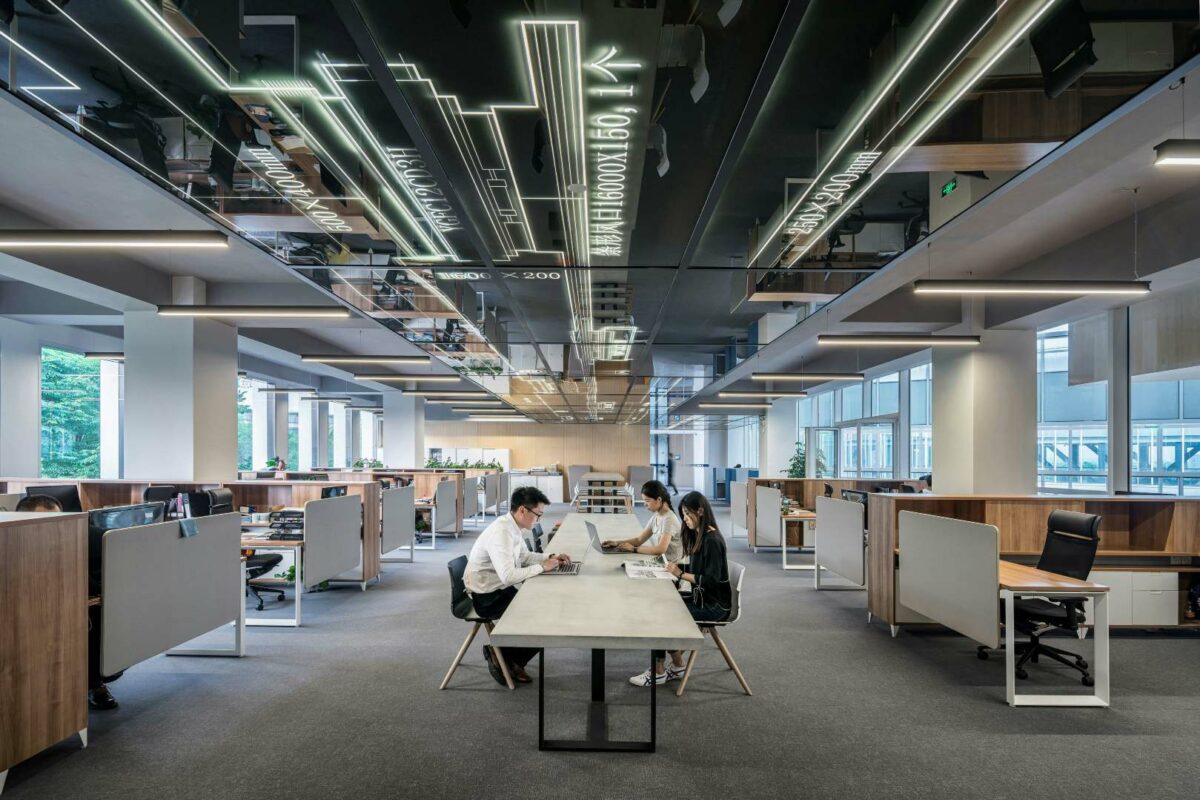One thing is for certain – the design of an office space and the technology within that space, can have a profound impact on the productivity, engagement, and the overall wellbeing of a workforce. In recent years, the concept of sociability and collaboration has dominated workplace design – hence the proliferation of open plan spaces – and the focus for many has been on creating flat hierarchies and bringing colleagues together, under the assumption that an open space would make it easier to share knowledge and build relationships.
However, blindly following a one-size-fits-all-approach will not necessarily bring positive change, or translate into higher engagement and productivity. Changes made to the built environment have the power to enhance employee experiences, negate time wasting and deliver an overall more personalised environment, helping employees feel comfortable and productive in their office.
A multi-faceted workforce with ever-changing demands
Every workforce is a breed of its own, made up of employees each with different needs and expectations which can change on a daily basis. Today’s employees want the freedom to be more productive and creative without formal restrictions, as well as the freedom to move between spaces to complete different tasks. Workspaces that cannot provide compartmentalised zones, for example, are failing to cater to more than half of employees (54%) who require quiet zones to think and want to work away from their desk to concentrate.
Worryingly, many organisations do not have the basic foundations in place to support a productive workforce – only 39% of employees globally say their office is set-up to allow them to conveniently work away from their own desk.
To uncover the true needs of a workforce, employers must first recognise the multiple generations they are catering for and truly understand their needs and values – the priorities for the youngest generation in the workplace can be in stark contrast to the eldest. Research suggests that 18-24 year-olds are now less driven by money and instead are drawn to companies with similar values and beliefs. In fact, the freedom to move around during the working day is so vital to this age group that it topped the list of their preferred benefits in a modern office. For a generation that has grown up with the ability to communicate rapidly from anywhere in the world, it makes sense they expect this to be supported in the workplace.
Allowing employees more movement and fluidity within their own office is also a simple way to encourage teams to look away from their screens and stretch their legs. Afterall, our minds and bodies are our most important assets and workplaces ought to be supporting people with this, too.
Technology as an enabler
It’s clear to see how the built environment and existing infrastructure can restrict productivity and engagement, so what’s the solution?
Whilst many offices do offer the ability to work from different spaces, over a third of employees who have this option do not feel their office was fully set up to allow them to do so conveniently. It’s not enough to preach workplace mobility without putting in place the infrastructure that enables employees to practice it. Embracing workplace mobility is about combining a work culture that promotes it with the tech that supports it.
In our world of 24/7 connectivity, access to convenient power is a deal-breaker for the mobile employee. Digital dependency has created a challenge; thousands of daily interactions with our devices and multiple apps running simultaneously is draining power from phones, fast, and two-thirds of mobile users run out of battery before 5pm. It is little wonder, therefore, that lack of charge-points is the third strongest reason why employees are reluctant to move away from their desks. But, scarce plug points is only part of the battle. If businesses are to future proof themselves and lay lasting foundations, they must recognise not just the immediate need, but the evolving needs of employees. For example, the number of wireless charging devices currently sits at around 1 billion, but with Apple, one of the world’s biggest manufacturers recently announcing that each and every one of its devices will now be shipped with wireless charging – this figure is expected to rise even higher to around 1.7 billion at the beginning of 2020. The employees of the future are going to walk into the office with a myriad of wireless charging devices, expected to be charged whenever, wherever they are in the office.
The ability to charge a device when it is placed on a wireless charger, removing the need to have a plug and a cable with you at all times and be near a plug socket, is the kind of convenient tech that enables workplace mobility. What’s more, over half of employees say that not needing to carry charging cables would be the main benefit of wireless charging, and, 44% said having a full battery when leaving the office would excite them the most, both consequently making it easier to move around an office with full freedom.
A powered phone or device means constant access to apps such as Slack, Dropbox and Google Drive, allowing employees to work on the move and take advantage of a flexible work environment. This ‘work from anywhere in the office’ concept also leads to better collaboration among employees, which increases engagement and efficiencies.
Meeting rooms and booking
For more than half of employees, the biggest time-wasters are tech related. Amongst the biggest barriers to employee productivity is poorly functioning and poorly designed meeting rooms, but there is a clear incentive to introduce efficient and time smart technologies. In fact, the time wasted due to tech issues come in at a cost of £3.4 billion to UK employers, annually. All the more reason for companies to make sure that when they promote workplace mobility, they have the supporting infrastructure.
A workplace which truly enables mobility would, for example, allow employees to enter a meeting room, place their phone on the smart wireless charging spot, and instantaneously trigger a meeting. This real-time smart experience, can all be enabled by employers embracing the Internet of Things (IoT). Not only does the IoT allow employees to initiate meetings through the placement of a phone, but it also enables companies to make smart, informed decisions about their employees’ mobility. When integrated with workplace management platforms, smart wireless charging, for instance, can capture ‘insightful real-time data on employee behaviour and real-time spot availability, giving live data on which meeting rooms are available and directing employees towards under-utilised facilities.
A flexible environment for an evolving workforce
Most leadership teams will acknowledge that employees are affected by their surroundings, but accepting that a poor workplace may be bad for employees – and the reason for poor employee performance – may be awkward for those who see cost reduction as the only path to greater efficiency. Cost reduction may be one path to greater efficiency but investing in tech that enables workplace mobility, such as smart wireless charging, supports employees to be more efficient.
If the built environment of an office and its infrastructure are fundamentally inflexible, employees’ own flexibility and mobility will be inhibited and productivity and engagement will suffer. Enabling employees to leverage the space around them, and continuously mould it to their individual needs will be crucial in the workplace of tomorrow, and employers who invest in smart technology to achieve this will be able to meet the evolving demands of a connected workforce for the long-term.
To find more content on how the built environment effects employee engagement and productivity, click here.
Chargifi is a market-leading cloud management platform for wireless charging at scale.
Content Team
Work in Mind is a content platform designed to give a voice to thinkers, businesses, journalists and regulatory bodies in the field of healthy buildings.




